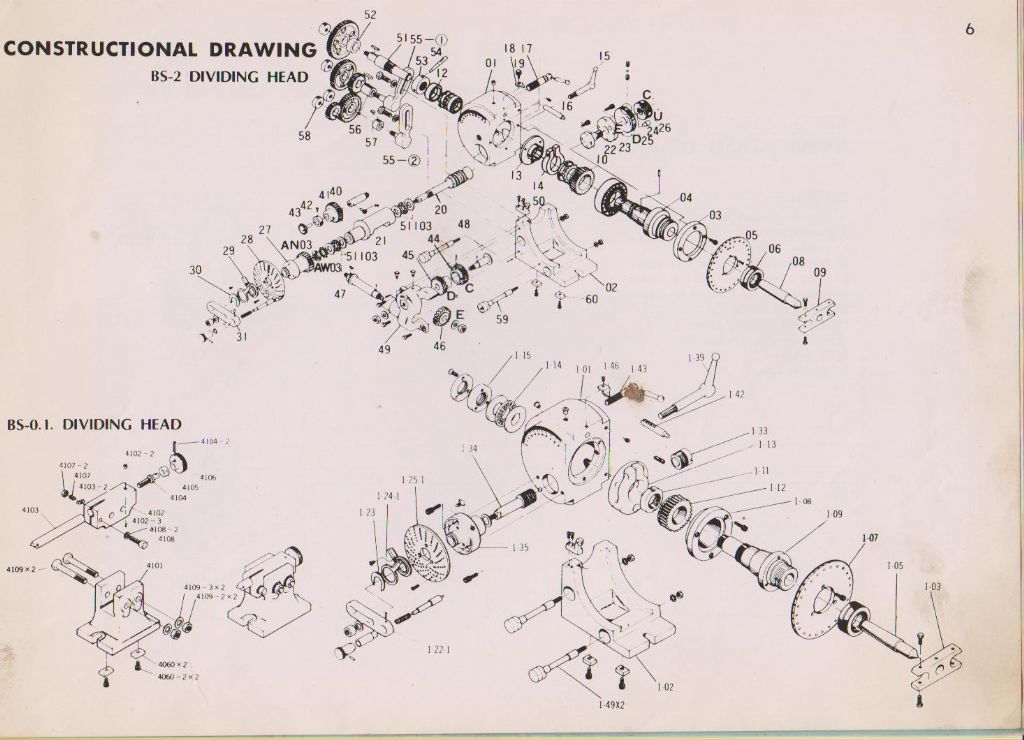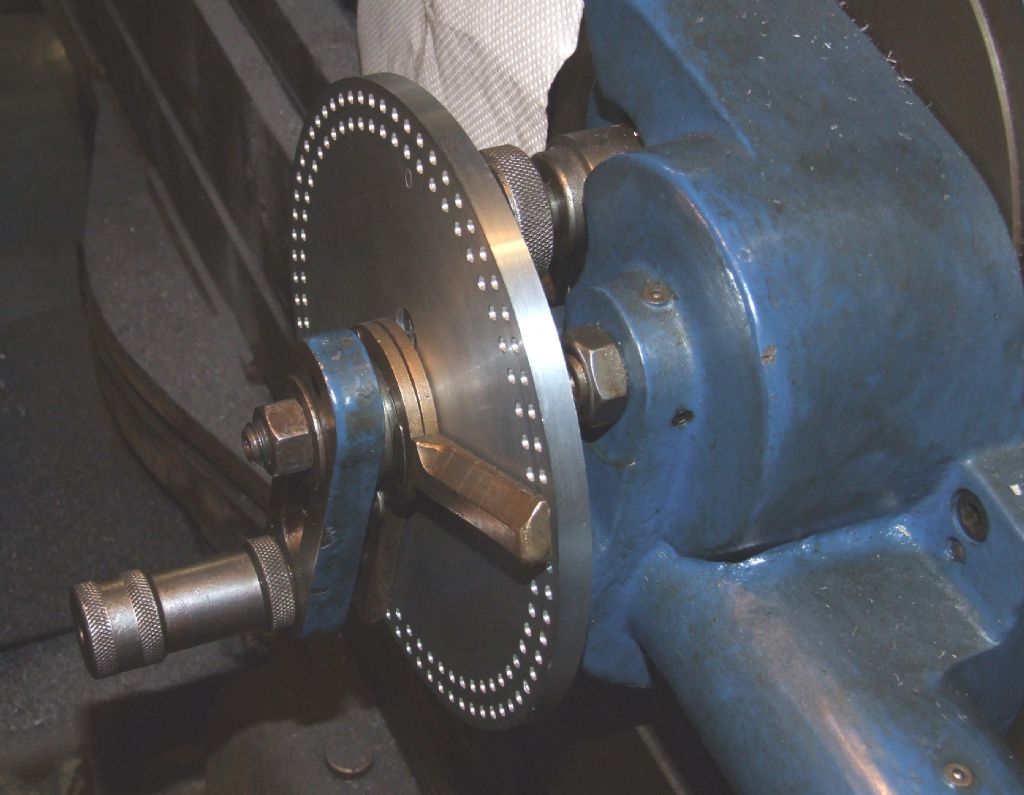What is it with people and simple maths!
Take a somewhat simplified example.
Say 1). the table turns is 90 per full revolution
2). Ten teeth are required.
Very clearly the answer will be 10 turns per tooth, but lets do the calculation, just as a demonstration….
Clearly we would want to choose a 10 hole (space) plate for this.🙂
For 90 turns of the handle 900 holes would pass the starting point (simple enough for everyone? 90 x 10 = 900)
if 900 holes is turned for 10 teeth, one tooth would need 90 holes (that’s right, 900/10 = 90).
We know that each turn of the handle is 10 holes, so 90 holes is 90/10 turns. = 9 turns. Surprise, surprise?
ANY AND EVERY CALCULATION IS NO DIFFERENT. MOST HAVE A CALCULATOR TO ACTUALLY DO THE MATHS. SO WHY DO WE HAVE TO KEEP GOING OVER THIS SUBJECT? (the answer is below)
—————-
Some more examples, a little more challenging:
say 19 teeth with a 40 turn rotary table/dividing head (an unlikely real life example)
We clearly choose a 19 hole plate for this, so 40 turns is 40 x 19 holes in total (= 760)
760 holes has to make 19 teeth so each tooth will require 760/19 holes = 40 holes per tooth.
With a 19 hole plate that will be 2 turns and 2 holes for each tooth. JOB DONE. One could use a plate circle of 38 or 57 and both would work (but unlikely those numbers would be found on your dividing plates🙂 )
Now, if a 38 tooth plate was used the answer would work out to 2 complete turns and 4 holes. Exactly the same result in practice.
The simplest maths is: take table turns ratio, multiply by holes in plate, then divide by the number of teeth required. If the answer is greater than the hole number chosen it will need more than one turn and you can work out how many and the remainder.
Another: 45 teeth with a 72 turn table
Let’s choose a 15 hole circle (as that is a factor of 45 (15 x 3 = 45)). There unlikely to be a 3, 5, 9 or 45 hole circle on your plates.🙂
72 turns of 15 holes = 72 x 15 = 1080 holes for 45 teeth.
1080 divided by 45 will give holes per tooth = 24
(The calculator operations needed are 72 x 15/45 = 24)
We have a 15 hole circle so require one complete turn and 9 holes per tooth. Job done.
Notes: if your correctly calculated answer does not equal an exact whole number, you’ve chosen the wrong plate circle! Prime numbers are always included on the plate circles or they can not be cut.
———-
Only three numbers to be inputted to one’s calculator, basically. Nothing is difficult about that. BUT choosing a suitable plate circle seems likely to be the major stumbling block? (The answer to the question posed above).
Lets look at a 63 tooth gear. Possible factor pairs of 63 are (1, 63) (3, 21) and (7, 9).
A 63 hole plate would be easy (one hole/tooth), but 63 hole plates are thin on the ground. 1 and 3 are not sensible choices so 7, 9 and 21 are possibilities (even though 7 and 9 are not usually found on plates). Just trying them with your table turns, to see if the answer is an exact whole number, is one way to find a possible solution.
90 turn plate:
90 x 7/63 = 10 Works OK but unlikely an option
90 x 9/63 = 12.86 Does not work out to a whole number, so not OK.
90 x 21/63 = 30 Works OK
72 turn plate:
72 x 7/63 = 8 Works OK but not likely an option
72 x 9/63 = 10.29 Does not work out to a whole number, so not OK
72 X 21/63 = 24. Works OK
40 turn table:
40 x7/63 = 4.44 Does not work out to a whole number, so not OK
40 x 9/63 = 5.71 Does not work out to a whole number, so not OK
40 x21/63 = 13.3 Does not work out to a whole number, so not OK
(with a 40 turn table one would require a 63 hole plate!).
36 turn table:
36 x7/63 = 4 Works OK but not likely an option
36 x 9/63 = 5.14 Does not work out to a whole number, so not OK
36 x 21/63 = 12 Works OK
Note that for all the OKs, the ‘other’ factor is also a factor of the table turns ratio.🙂 Helps when deciding on a plate circle to check out. As one’s table will be of a known turns ratio, you would soon work out the possible options fairly easily. The plates are made with the least number of useful circles (why 7 and 9 are not usually found) and will include all possible prime numbers. Numbered hole circles will work for any turns ratio for that same number of teeth – the answer for the number of holes/tooth will be the same as the turns ratio (no calculation needed).
I included the 40 turns ratio table examples to demonstrate why they are not a popular choice (9 degrees per turn of the handle!) for either the user or (more importantly) the manufacturers🙂 .
This boils down to: pick the highest factor of the tooth count, that is on your plates, and just work it out.
Remember that holes really means spaces in all the above…
I didn’t get a chart with either of my rotary tables and I would not trust them (or the internet) when it is so easy to sort it out myself. I use so few settings that keeping a chart for it would be pointless for me.
 Bazyle.
Bazyle.





